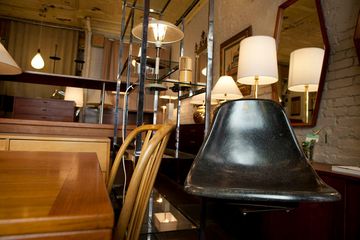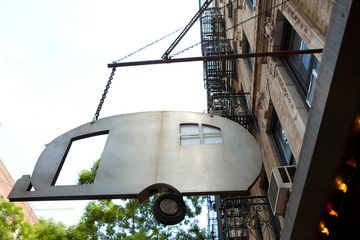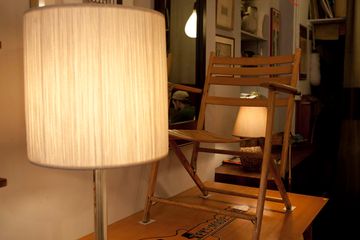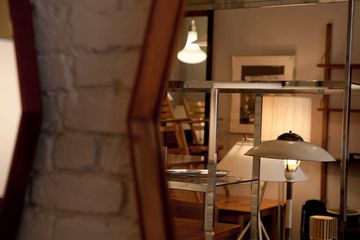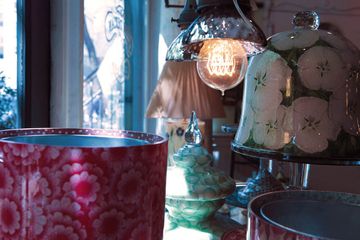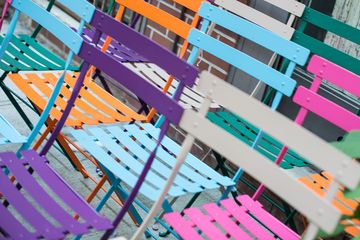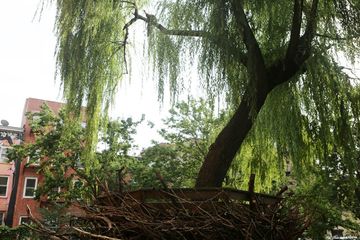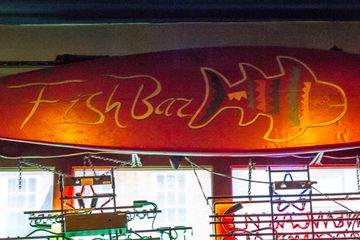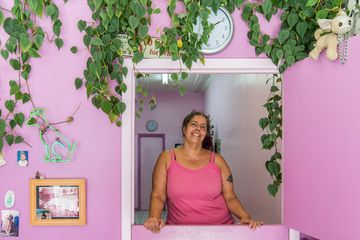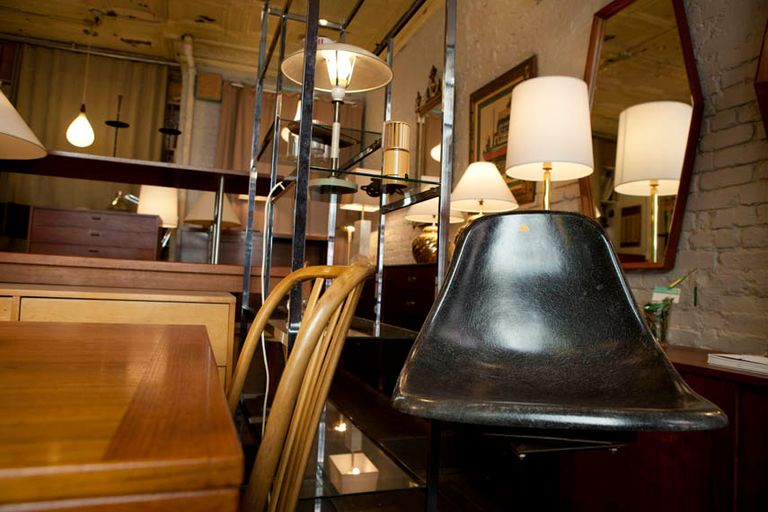
Though native to Philadelphia’s suburbs, Stuart Zamsky has earned the label of “true New Yorker” after decades of living in the East Village and running the antique shop, White Trash, half a block from his apartment.
Stuart and his now-wife, Kim Wurster, were actors doing odd jobs and frequently traveling out of town in the 1990s. On their trips, they visited flea markets, stockpiling housewares, 1950s collectibles, and kitsch, which they would resell on weekends on the street outside of their home. “We amassed a huge amount of stuff” and garnered a following from neighborhood locals, Stuart said. “We just loved it.”
Over time, the couple’s sidewalk sales drew the ire of police, so they transferred their growing inventory to a nearby storefront and have continued selling beautiful furniture and “value-oriented pieces” ever since. Kim went back to teaching while Stuart managed the business — he nonetheless still relies on her good aesthetic judgment when picking his wares.
Though Stuart is sometimes saddened by the migration of his fellow antique shops to isolated showrooms or online platforms, he is delighted to see that the digital age has ushered younger buyers into the world of antiquing. During the COVID-19 pandemic in particular, he found that people stuck at home increasingly felt the urge to “buy themselves real furniture and leave their cinder blocks and milk crates behind.”
As for the shop’s unique name, Stuart admits that it was inspired by an inside joke. When he and his wife would return to the city — hauling kitchen tables strapped to a DIY roof rack on their car and with furnishings and knickknacks poking through the windows — they would quip, “We look like the worst white trash in the world.” Humorously, the title stuck, even as the business left its hodgepodge beginnings behind and started offering more modern pieces.
